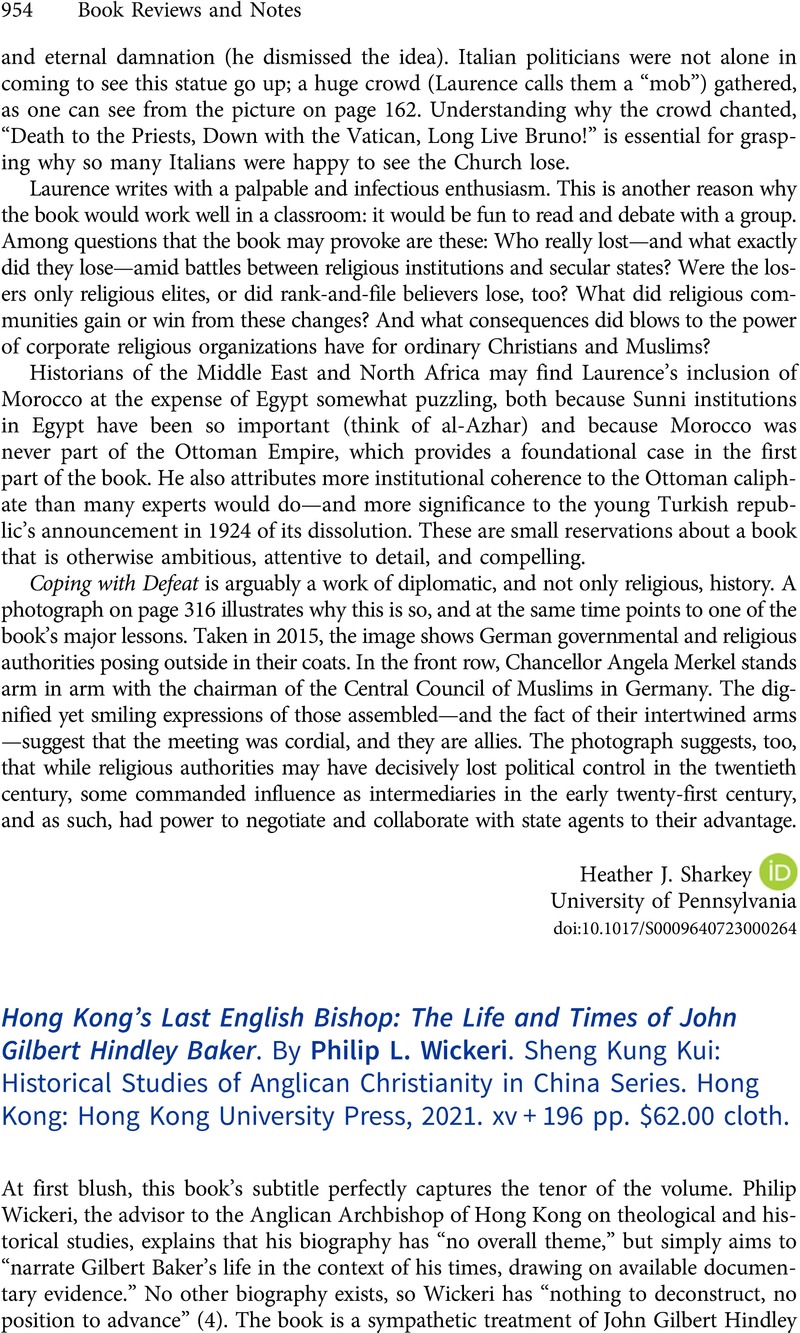No CrossRef data available.
Article contents
Hong Kong's Last English Bishop: The Life and Times of John Gilbert Hindley Baker. By Philip L. Wickeri. Sheng Kung Kui: Historical Studies of Anglican Christianity in China Series. Hong Kong: Hong Kong University Press, 2021. xv + 196 pp. $62.00 cloth.
Review products
Hong Kong's Last English Bishop: The Life and Times of John Gilbert Hindley Baker. By Philip L. Wickeri. Sheng Kung Kui: Historical Studies of Anglican Christianity in China Series. Hong Kong: Hong Kong University Press, 2021. xv + 196 pp. $62.00 cloth.
Published online by Cambridge University Press: 03 May 2023
Abstract
An abstract is not available for this content so a preview has been provided. Please use the Get access link above for information on how to access this content.

- Type
- Book Reviews and Notes
- Information
- Copyright
- Copyright © The Author(s), 2023. Published by Cambridge University Press on behalf of American Society of Church History


